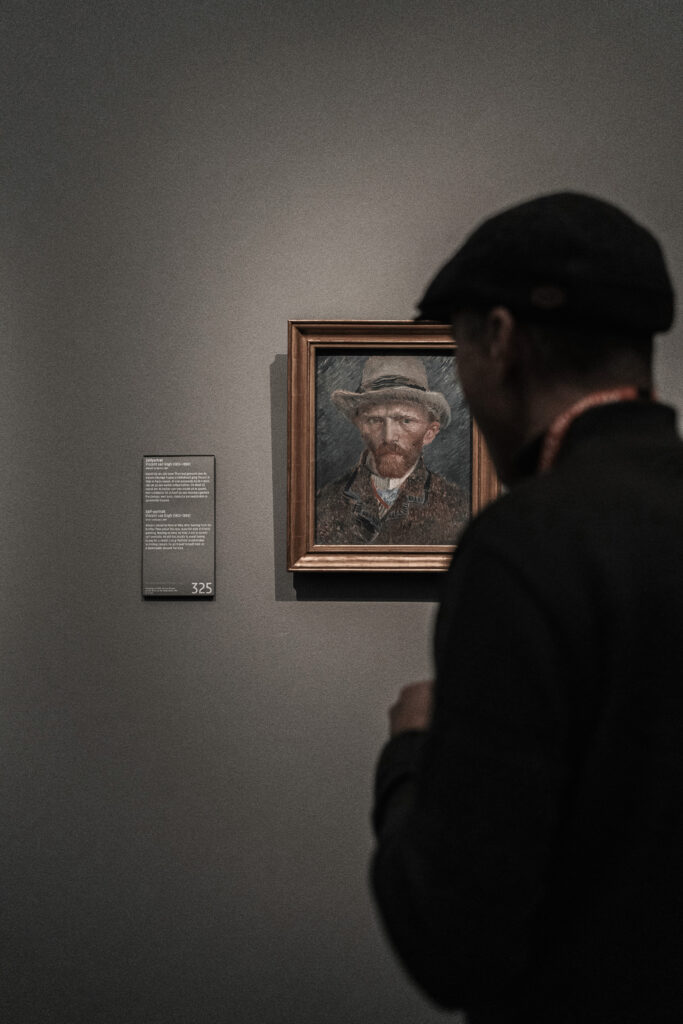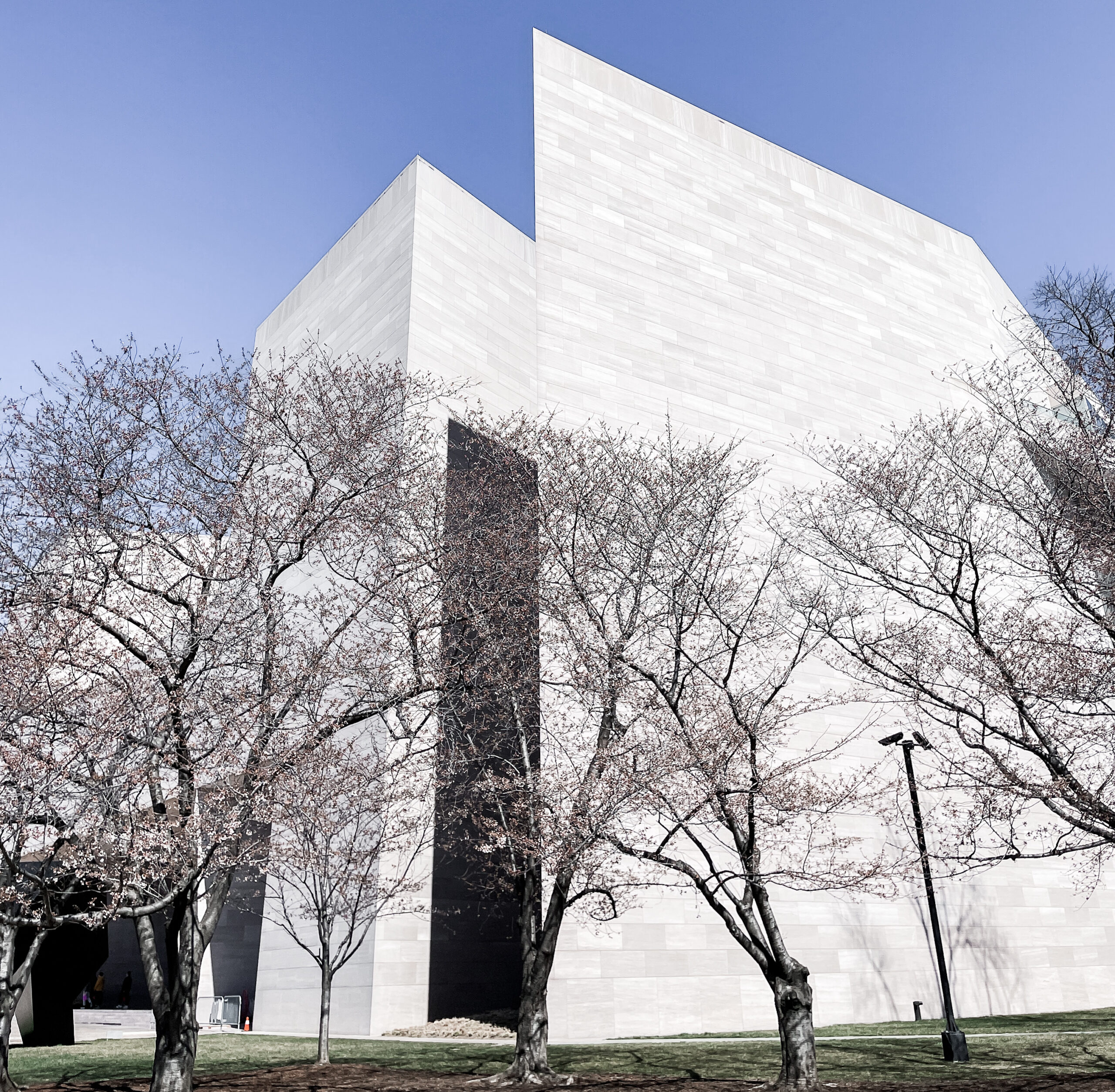I remember the first landmark art exhibit I viewed. The year was 1976, and the museum was the Metropolitan Museum of Art, the MET. Even at age ten, I was acutely aware of the specialness of what I was seeing and the fact that I could see it just a bus ride away from my home. I felt so lucky to live just a bus ride from the MET. The exhibit was Treasures of Tutankhamun. I’ve since read about the craziness that occurred behind the scenes to make that show possible, and apparently, it’s astonishing that it happened at all.
I still feel special whenever I get the opportunity to see an iconic showcase. For the same reason that I love travel, I love exhibits that bring together world-renowned treasures and put them in context. My curiosity is satiated, and I always learn something.
Granted, not everyone is tickled and inspired by artists, art history, and creativity. But if you are, like me, here are some that would be worth traveling for.
Chagall: A Cry of Freedom
Mapfre Foundation, Madrid
February 5 – May 5, 2024
Chagall’s work is an integral part of the fabric of New York City with his monumental works. He created “The Triumph of Music” for the United Nations General Assembly Hall, depicting music and dance scenes from various cultures worldwide, where it serves as a symbol of international harmony and unity. Chagall also designed the iconic set of murals adorning the interior of the Metropolitan Opera House at Lincoln Center in New York City. Known as “The Sources of Music,” these murals feature vibrant, dreamlike imagery inspired by Chagall’s love for music and theater. Whenever I’m at Lincoln Center I seek them out.
Now a new exhibition, a collaboration between La Piscine – Musée d’Art et d’Industrie André Diligent (Roubaix), Fundación MAPFRE, and the Musée national Marc Chagall, offers a comprehensive exploration of the artist’s work in the context of the historical events he experienced, providing a unique perspective on his humanist socio-political commitment.
Marc Chagall (1887-1985), a witness to two world wars and forced migration, navigated a tumultuous 20th century, moving from White Russia to France, Germany, Palestine, and the United States.
Displaying over 160 works, the exhibition at Fundación Mapfre sheds new light on Chagall’s concerns, revealing his unwavering belief in harmony and universal peace amid the turbulent events of his time. In addition to major paintings, the exhibition features nearly a hundred documents, including Chagall’s writings in Yiddish, his mother tongue, expressing his political and humanist ideals. Nadia Arroyo, the exhibition’s curator, highlights its goal of presenting Chagall’s work through a fresh lens, enriching the cultural landscape, and fostering new interpretations of international modernity.
Yoko Ono: Music of the Mind
Tate Modern, London
February 15—September 1, 2024
At the Tate Modern, Yoko Ono, now 90 years old, receives a comprehensive retrospective highlighting her identity pre-John Lennon. This landmark exhibit establishes her pioneering role in conceptual art. This retrospective offers a balanced assessment of an artist whose individual work often stood in the shadow of her marriage to Lennon, promising to redefine— or perhaps return—her artistic reputation.
Born in Tokyo nearly 91 years ago into a distinguished family with ancestral ties to samurai heritage and a wealthy banker father, Ono’s life was marked by a dynamic interplay between the United States and her native Japan. She enjoyed a diverse cultural upbringing, mastering German Lieder, Italian opera, and a Japanese tradition of translating everyday sounds into musical notation. Her formative years were shaped by the American bombings of Japan during World War II. At Sarah Lawrence College in the 1950s, she pursued studies in poetry and developed an affinity for 12-tone music.
In her work, such as “Music of the Mind,” Ono explores ideas, confrontations, and performances as much as she does installations. This retrospective offers viewers the opportunity to experience iconic pieces such as “Cut Piece” (1964), where participants were invited to cut off fragments of her clothing, and her once-banned “Film No. 4 (Bottoms)” (1966-67), a provocative exploration challenging societal norms.
Paris 1874: The Impressionist Moment
Musee d’Orsay, Paris
March 26th to July 14th, 2024
National Gallery of Art, Washington DC
September 8, 2024 – January 19, 2025
On April 15, 1874, the “Anonymous Society of Painters, Sculptors, and Engravers, etc.” boldly exhibited at Nadar’s Parisian studio, challenging the established Paris Salon. The event marked the genesis of modernist painting.
In commemorating its 150th anniversary, “Paris 1874: The Impressionist Moment” showcases approximately 130 artworks, exploring artists’ responses to post-war Paris. Works by renowned artists such as Claude Monet, Auguste Renoir, Edgar Degas, Berthe Morisot, Camille Pissarro, Alfred Sisley, and Paul Cézanne—later recognized as the Impressionists—this inaugural event are featured and celebrated is now celebrated as the genesis of modernist painting and a pivotal moment in Western art history.
The exhibition also examines the circumstances that led over 30 artists to defy the Salon system and form an “anonymous cooperative society” to seek creative autonomy. Above all, the exhibit will prompt viewers to reconsider the essence of Impressionist art and its impact on modern art, as epitomized by Louis Leroy’s term “impressionist.”
On April 15, 1874, the “Anonymous Society of Painters, Sculptors, and Engravers, etc.” boldly exhibited at Nadar’s Parisian studio, challenging the established Paris Salon. The event marked the genesis of modernist painting.
In commemorating its 150th anniversary, “Paris 1874: The Impressionist Moment” showcases approximately 130 artworks, exploring artists’ responses to post-war Paris. Works by renowned artists such as Claude Monet, Auguste Renoir, Edgar Degas, Berthe Morisot, Camille Pissarro, Alfred Sisley, and Paul Cézanne—later recognized as the Impressionists—this inaugural event are featured and celebrated is now celebrated as the genesis of modernist painting and a pivotal moment in Western art history.
The exhibition also examines the circumstances that led over 30 artists to defy the Salon system and form an “anonymous cooperative society” to seek creative autonomy. Above all, the exhibit will prompt viewers to reconsider the essence of Impressionist art and its impact on modern art, as epitomized by Louis Leroy’s term “impressionist.”
Jenny Holzer: Light Line
Solomon R. Guggenheim Museum, New York
May 17–September 29, 2024
In 1989, Jenny Holzer presented her Truisms one-liners through scrolling iterations, displayed in a rhythmic series along a single strip of LED lights that ascended the spiraled walls of the Guggenheim’s rotunda. Next year, Holzer and the museum will commemorate the 35th anniversary of this groundbreaking artwork by recreating it, albeit with modern updates for the 21st century.”Light Line,” Holzer’s highly anticipated retrospective, scheduled for May, will showcase examples from Truisms and her related series of text-based artworks, the Inflammatory Essays. These LED displays will accompany a comprehensive collection of pieces spanning Holzer’s career from the 1970s to the present, including paintings, works on paper, and inscribed stone sculptures. As an added treat, another of the artist’s previous installations at the museum will reintroduce the 2008 façade-covering light projection, “For the Guggenheim.”
Van Gogh: Poets and Lovers
National Gallery of Art, London
14 September 2024 – 19 January 2025
Experience Van Gogh’s most spectacular paintings in this once-in-a-century exhibition.
Viewers will stroll alongside a pair of lovers beneath a starry night, gaze at swirling clouds and cypress trees dancing in the wind, and linger in Van Gogh’s beloved ‘Poet’s Garden’ or find solace under a shady tree in Saint-Rémy.
The exhibition brings together beloved Van Gogh paintings from around the world, including some rarely seen in public, alongside his extraordinary drawings.
During his transformative two years in the south of France, Van Gogh revolutionized his style, drawing inspiration from poets, writers, and artists. This period in Arles and Saint-Rémy is considered pivotal in his career, marked by a desire to tell stories through a landscape of poetic imagination and romantic love.
Highlights include ‘Starry Night over the Rhône’ (1888, Musée d’Orsay), ‘The Yellow House’ (1888, Van Gogh Museum), ‘Sunflowers’ (1888), ‘Van Gogh’s Chair’ (1889), and many others.
Join the celebration of the 200th birthday of London’s National Gallery of Art with Van Gogh’s ‘Poets and Lovers.’

I.M. Pei: Life is Architecture
M+ Museum, Hong Kong
June 29, 2024 —January 31, 2025
The first major retrospective of Ieoh Ming Pei (1917–2019), “I. M. Pei: Life is Architecture,” comprehensively examines one of the most influential architects of the twentieth and twenty-first centuries. Pei’s illustrious career spanned seven decades and encompassed a diverse range of projects worldwide, including the National Gallery of Art East Building in Washington, D.C., the modernization of the Grand Louvre in Paris, the Bank of China Tower in Hong Kong, and the Museum of Islamic Art in Doha. These iconic landmarks firmly established Pei’s legacy in architectural history and popular culture, reflecting his transcultural vision and profound impact on cities globally.
The exhibition delves into Pei’s practice through six thematic lenses: ‘Transcultural Foundations,’ ‘Real Estate and Urban Redevelopment,’ ‘Art and Civic Form,’ ‘Material and Structural Innovation,’ ‘Power, Politics, and Patronage,’ and ‘Regenerating Cultural and Historical Archetypes.’ These themes explore Pei’s approaches and areas of focus throughout his career, highlighting the interconnectedness of architecture with social, cultural, and biographical contexts.
The exhibition features a rich selection of drawings, sketches, videos, models, photographs, and archival documentation, many of which are presented for the first time. It offers a deeper understanding of Pei’s contributions. Additionally, newly commissioned photographs of Pei’s buildings by a new generation of photographers, as well as architectural models of his built and unbuilt projects, provide a contemporary perspective on his landmark contributions to architecture.

As you explore these exhibitions, you’ll journey through human imagination and culture. From Chagall’s dreamlike visions to Van Gogh’s poetic landscapes, each showcase offers a window into creativity and history.
Let these exhibitions inspire dialogue, understanding, and appreciation across borders and generations, reminding you of the timeless power of artistic expression to enrich your life. And inspire you to travel!

